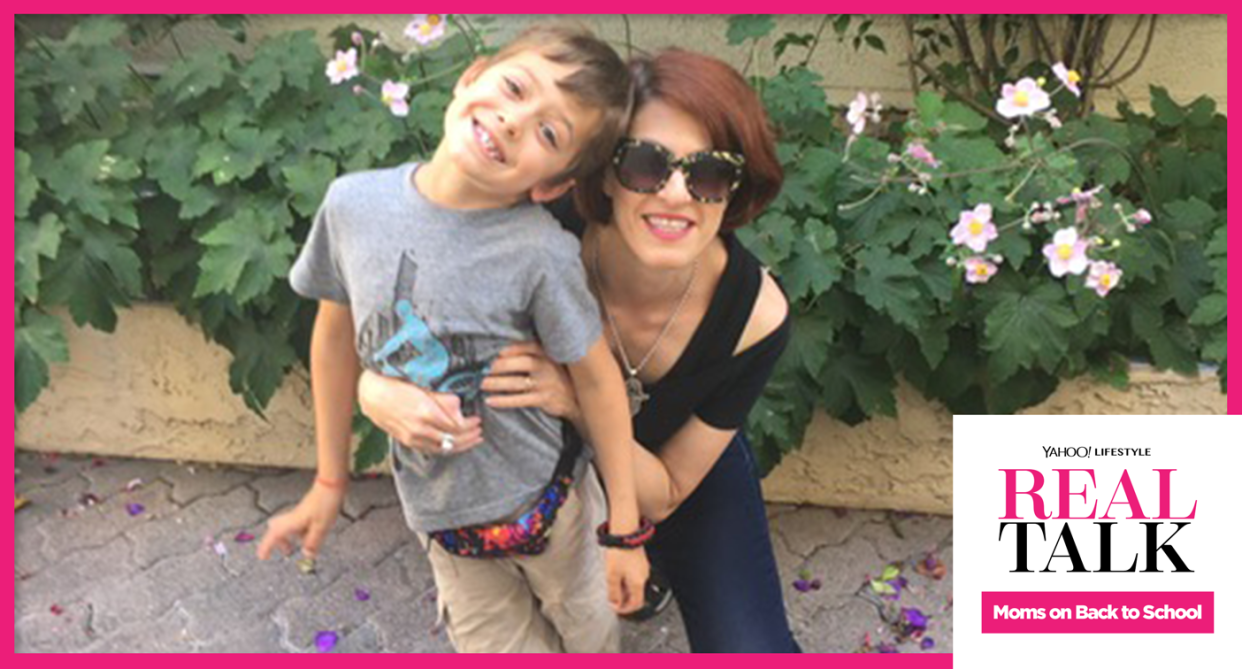How one savvy mom realized her 6-year-old's frequent trips to the bathroom were something more serious

It was the last week of school for my 6-year-old son, Benjamin, and we had just returned from a holiday weekend at the beach. While Benjamin didn’t seem sick in any way — he was his usual energetic and mischievous self — I could tell that something was wrong.
He was going to the bathroom several times during the night and then wetting his bed in the morning. Of course, bed-wetting is totally normal for a 6-year-old, as is getting up to pee. But doing both for several days didn’t seem right.
One night, when I was unable to go back to sleep after hearing Benjamin stumble down the hallway to the bathroom, I searched online for information about frequent urination at night in children and started to panic when every article I read listed “diabetes” as a likely cause. I was determined to get him tested the next day.
I called our pediatrician’s office as soon as it opened and spoke with a nurse who asked if there were any other symptoms, such as excessive thirst, weight loss, fatigue, irritability, vomiting, etc. I said no to vomiting and fatigue but, as for the others, I wasn’t sure.
Benjamin had seemed particularly thirsty the past few days, but he had also spent those days playing at the beach in the sun. He hadn’t lost weight, but during his last annual checkup, the pediatrician noted that he wasn’t gaining weight at the expected rate for his age and height. He was definitely irritable at times, but what 6-year-old isn’t?
In the absence of other, less-ambiguous signs, the nurse said that she didn’t suspect diabetes and instead recommended limiting his liquids before bedtime.
I was relieved, but not entirely convinced. I still wanted him tested, so I called Stanford Hospital’s urgent care clinic and made an appointment for that evening, May 28. This way, I reasoned, I wouldn’t have to pull him out of school over what might be a false alarm.
At the clinic, I had just finished texting a friend, “Am at urgent care, probably overreacting” when the results of Benjamin’s urinalysis came back.
There is sugar in his urine.
The doctor did a quick finger-stick blood test.
His blood glucose is 325.
And then she looked at me and said, “He has diabetes.”
It was like hearing someone speaking while you’re underwater and drowning.
But he can lead a normal life.
These words pulled me back to the surface, and I clung to them. As I was about to find out, Type 1 diabetes (T1D) is a lifelong, life-changing diagnosis. But it is manageable.
And because we caught it early, the results of the next test — for ketoacidosis, a potentially life-threatening diabetes-related complication — were negative. So after a short, precautionary visit to the ER for intravenous fluids and Benjamin’s first dose of insulin, we were able to take him home and sleep in our own beds.
The next day, our whole family met with a team of doctors and diabetes educators at Stanford’s endocrinology clinic who taught us how to check Benjamin’s blood sugar, give insulin injections, and manage all the hurdles of daily life with T1D.
One of the diabetes educators shared advice that has shaped my approach to T1D ever since. He said, “Never ask if Benjamin can do something. Ask how he can do it.”
Armed with this advice, I took Benjamin back to school the next day to celebrate the end of the year with his classmates. Two weeks later, I dropped him off at the day camp we’d registered him for weeks earlier. Less than a month after his diagnosis, we went to Spain, and then to visit my family on the East Coast. He became an expert at counting carbs, and I became really good at injecting insulin during in-flight turbulence.
These days, Benjamin is a first-grader who loves math, impromptu dance parties, and basketball. We are learning to live our “new normal” with the support of our diabetes team, Benjamin’s school nurses and teachers, our synagogue, and a growing network of local T1D families.
I hope you never see any of the signs of T1D in your child. But if you do, trust your instincts and get your child tested (it’s quick, easy, and virtually pain-free). I’m glad I did — and, whatever the result, you will be too.
Read more from Yahoo Lifestyle:
Mother shares the outrageous cost of insulin for her daughter
Mom on her son being bullied: ‘It’s particularly gut-wrenching when it’s a child with a disability’
Follow us on Instagram, Facebook, and Twitter for nonstop inspiration delivered fresh to your feed, every day.

